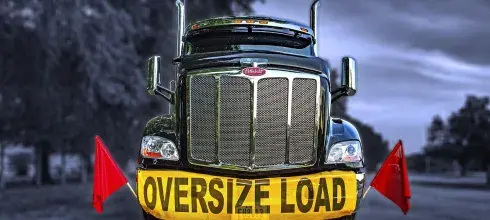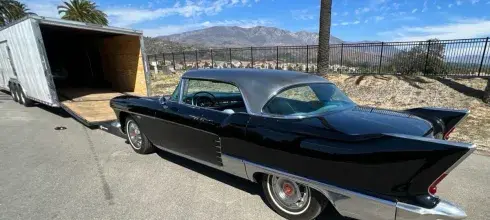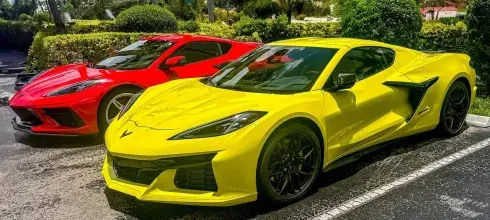Picture this: you’re nearing the end of your lease term, and you’ve fallen in love with that shiny new model at a different dealership. But wait, can you actually trade in your leased car to another dealership? It’s a question that many people ask when stuck between the desire for something new and the burden of their current lease agreement.
In this blog post, we’ll explore this dilemma, looking at the ins and outs of trading in a leased car to another dealership. Strap in as we unravel the complexities and uncover the possibilities in this automotive conundrum.
How Leases Work
A lease is very similar to a vehicle loan. You borrow the difference between the upfront cost of the vehicle, minus the down payment, and the vehicle’s residual value at the end of the lease, typically 36 months. Lessees pay off the borrowed amount each month.
At the end of the lease period, the customer takes the vehicle back to the dealer. The lease contract gives the customer the option to buy the vehicle at the lease end for a specific value that’s stated in the contract. The payoff amount is that residual value, plus any applicable fees.
If the predicted residual value is correct after 36 months, it will match the vehicle’s actual resale value. In such instances, some people decide to purchase their vehicle, but it’s not any kind of bargain.
If the vehicle’s actual market value is less than the predicted residual, which is often the case, the good news for the lessor is that they’re not liable for the difference. The best deal in such scenarios is to walk away.
Important Considerations Before You Trade in a Leased Car
Did you realize that it’s not the dealership that holds your lease but the banks or leasing companies? This fact makes it possible to trade in your leased car to another dealership, as long as it’s in the US because the dealership can purchase your vehicle from the lender.
However, before you jump right in, there are some important considerations to keep in mind.

The Car’s Trade-in Value
Firstly, you need to work out the vehicle’s trade-in value. There’s a simple way to do this, by subtracting the market value of the car and the payoff value. If the resulting answer is positive, consider this a green light to trade in the car.
But, if the figure is a negative one, it’s likely the dealership will turn down the trade-in. For the agreement to work, the trade-in value has to be positive.
Possible Penalties and Termination Fees
Lease companies and banks tend to include measures that reduce the chances of an early termination. If you decide you want to continue with the termination of the lease you incur hefty penalties and termination fees. This is one key downside of leasing a car rather than owning it.
Payoff Value of the Car
Before you head to the dealership, learn more about the car’s payoff value. The lease financier will have this information, so contact them to find out more. The new dealership will also need this information before they take the trade in any further. You have to take care of the payoff for it to happen.
Lease Termination Option
Some lenders include an option for lease termination, which is often a better idea than trading in. There may be lower termination fees and penalties if you choose to terminate the lease altogether.
With the lease terminated, you can buy a new car from whatever car dealership you prefer. It’s an even better option if you decide to go ahead and lease with the same lender all over again. This is because some lenders allow you to let go of a lease early with fewer financial consequences.
Should You Trade in a Leased Car?
Whether or not you should trade in your leased car depends on several factors. If it’s going to cost you money that you can’t afford to lose, then it’s not such a good decision. However, if the value of the car is higher than the buyout amount, then you could put any profit towards a new vehicle.
To help you make the decision, here are some factors to keep in mind:
- Financial implications: If the residual value is lower than the buyout option, then trading your car in will cost money.
- Lifestyle needs: Our lives are ever changing and sometimes trading in your old car is a necessity. You might have just started a family and your two-door sports car needs to be swapped for a more family-friendly vehicle.
- Market conditions: The car market is constant fluctuating, with prices for new vehicles currently on the rise. It’s a good idea to assess the market before making any upgrades or changing your vehicle, as it could cost you money.
- Timing: Trading in your car will likely be a smoother and quicker process than trying to sell it privately.
- Popularity: The amount you get for your car will differ massively depending on the make and model. Some cars hold their value much better than others. Some cars are also more popular or well-loved.
Condition: The overall condition of your car will alter the price significantly.

How to Trade in a Leased Vehicle in 4 Steps
Trading in your leased car can be complex. Here are the key steps and factors to keep in mind, if you want the process to run as smoothly as possible.
Step 1 - Understand the Value of Your Car
Before you do anything, make sure you carefully research how much your car is worth. A dealer will usually try to secure a deal that is best for themselves, not the seller. Therefore, if you better understand how much your car is worth, you’re in a good negotiating position.
The internet is a wonderful tool for researching and there are tons of useful websites you can visit. Find out the market value of your car simply by entering the registration number. Kelley Blue Book is just one example.
Another option is to check out various used car buying sites and look at similar cars and see how much they’re listed for or their previous sale prices.
Step 2 - Work out Your Budget
If you decide you want to go ahead with your leased car sale, you should assess your finances and work out whether the commitment is one you want to make. If the residual value of your car is higher, you can proceed and put the money towards the cost of a new car.
Step 3 - Make it Presentable
To ensure you get the best value for your car, go to the effort of making it look good. Have the interior and exterior cleaned. Make sure there aren’t any bumps and scratches. A new-looking car will always fetch a higher price. It’s also a good idea to have any previous services or maintenance records near and handy when trading in.
Step 4 - Go to the Car Dealership
Once you’ve settled on a dealership online, head there with your car to proceed with the trade-in. It might pay to book an appointment before heading there, in order to save time.
Final Thoughts
As you navigate the intricacies of trading in a leased car to another dealership, remember that SGT Auto Transport stands ready to assist you in getting your new car home hassle-free. Whether upgrading to a sleek sedan or opting for a rugged SUV, our reliable auto transport services ensure that your vehicle arrives safely and securely at your doorstep. Say goodbye to the stress of coordinating long-distance travel and let us handle the logistics. Reach out to us today for a seamless shipping experience and embark on your next automotive adventure with confidence.







